Sadongmyeonok (사동면옥)
1.6Km 2021-12-17
9, Insadong, 8-gil, Jongno-gu, Seoul
+82-2-735-7393
A store with over 35 years’ experience that sells Hwanghaedo-style dumplings. The best menu at this restaurant is dumpling hot pot. This Korean dishes restaurant is located in Jongno-gu, Seoul.
Yetchatjip (old teahouse) (옛찻집)
1.6Km 2019-12-20
33-1, Insadong-gil, Jongno-gu, Seoul
+82-2-722-5332
Yetchatjip is a famous teahouse that has also been used as a movie filming set. It is a great place to stop by for a cup of natural traditional Korean tea, or the traditional summer treat patbingsu, made with the old way with shaved ice and homemade red bean topping.
Insadong Chatjip (인사동찻집)
1.6Km 2025-06-24
33-1, Insadong-gil, Jongno-gu, Seoul
Insadong Chatjip is a hanok teahouse that serves home-made traditional tea. Even the red beans used in the summer delicacy patbingsu
New Seoul Hotel (뉴서울호텔)
1.6Km 2021-05-11
16, Sejong-daero 22-gil, Jung-gu, Seoul
+82-2-735-8800
New Seoul Hotel is conveniently located in central Seoul near City Hall, providing guests with easy access to shopping, sightseeing, and more. The guestrooms are outfitted with modern amenities for a comfortable stay, and the hotel has several dining, entertainment and convenience facilities such as a business center, a souvenir shop and men's sauna.
Residencia Real Unhyeongung en Seúl (서울 운현궁)
1.6Km 2021-11-29
Samil-daero 464, Jongno-gu, Seúl
Es un patrimonio cultural, designado Sitio Histórico, ubicado en Unni-dong, Jongno-gu. Antigüamente no era un palacio como lo es el de Gyeongbokgung, sino que se trataba de la residencia de los miembros de la Familia Real, pero con el paso del tiempo se lo ha considerado como un palacio. La denominación en coreano del palacio Gyeongbokgung sería “Gunggwol”. El término “Gung” hace referencia al espacio de residencia, mientras que la palabra “Gwol” se refiere al espacio político. Esto significa que en Gyeongbokgung se llevaba a cabo la vida cotidiana y política de la Corte Real; pero en Unhyeongung residía la Familia Real de Heungseon Daewongun, regente y padre del rey Gojong. Cabe señalar que hacia finales de la época Joseon, en esta residencia real se han originado la mayoría de los sucesos históricos, políticas revolucionarias, política de aislamiento, etc., todo lo cual resalta su simbolismo histórico.
La construcción para ampliar el palacio Unhyeongung comenzó a un mes de que Gojong asumiera el trono, a petición de la madre del Rey. En un principio, se encontraba localizado en el área intermedia entre los palacios Changdeokgung y Gyeongbokgung, pero a medida que se fue extendiendo, con una cantidad de edificaciones anexas, ha abarcado la zona actual que corresponde a la Universidad femenina de Duksung, el antiguo edificio de la emisora TBC, el Centro Cultural Japonés, la Escuela primaria Gyodong y el edificio de la compañía Samwhan.
El edificio principal de Unhyeongung es la sala Noandang, construida en septiembre de 1864. Entre otras construcciones famosas se destacan Norakdang, Irodang, y las cuatro puertas de acceso al palacio, aunque en la actualidad ha quedado una sola puerta. Norakdang, siendo la edificación central del palacio, fue el escenario de los grandes festivos familiares, y Noandang fue el despacho de Daewongun, la construcción más significativa en la vida de este hombre, ya que fue el lugar en donde pasó los momentos más importantes de su vida y donde falleció. Presenta un estilo arquitectónico tradicional coreano, con tejado, cuyos extremos estaban decorados elegantemente. Irodang, situado al lado Norakdang, tiene la forma de un cuadrado, y en su interior se encuentra un hermoso jardín. Este lugar ha recibido la atención y el cuidado solo durante el período de regencia de Heungseon Daewongun, ya que luego de su muerte, fue difícil el mantenimiento. La residencia ha tomado la apariencia actual a partir de noviembre de 1993, que es cuando el gobierno de Seúl tomó posesión del establecimiento, y por lo cual, ejecutó las obras de remodelación y restauración.
Jidaebang (지대방)
1.6Km 2021-03-29
33, Insadong-gil, Jongno-gu, Seoul
+82-2-738-5379
It is a traditional tea house where you can learn how to drink tea. This cafe is located in Jongno-gu, Seoul. The representative menu is chrysanthemum tea.
Choedaegamne (최대감네)
1.6Km 2020-06-01
12-3, Insadong 8-gil, Jongno-gu, Seoul
+82-2-733-9355
Choedaegamne is a traditional restaurant with a cozy garden and a pond. It is located at the end of the alley next to Inside Plaza. At this famous restaurant located in Insa-dong, a traditional interior is enhanced by the date trees planted in between tables. Various dishes are available such as Ssambapjeongshik with organic vegetables, beef shabu shabu using beef stock and fresh tender galbi (ribs) which are purchased daily.
Tteul Gwa Dawon (뜰과다원)
1.6Km 2019-11-12
6-4, Insadong 8-gil, Jongno-gu, Seoul
+82-2-734-5310
Tteul Gwa Dawon (literally "yard and tea garden") is an up-scale hanok-style tea
and coffee house where you can enjoy a tranquil garden in the center of Seoul.
The tea and coffee shop offers traditional Korean tea made of 100% natural ingredients, as well as organic coffee. It is equipped with large private rooms which can accomodate a large number of guests, making it the best place to hold seminars or other types of social gatherings.
Tea, rice cakes, and other traditional snacks served here can be a good alternative for when you're in between meals.
Insadong Maneul Bossam (인사동마늘보쌈)
1.6Km 2021-03-19
12-5, Insadong 8-gil, Jongno-gu, Seoul
+82-2-735-7885
This is a Korean cuisine located in Insa-dong, Seoul. It is located at Ssamji-gil in Insa-dong. The representative menu is napa wraps with pork and garlic.
Tienda de Suvenires Coreanos en Insa-dong (한국관광명품점(인사동))
1.6Km 2024-02-19
Insadong 5-gil 14, Jongno-gu, Seúl

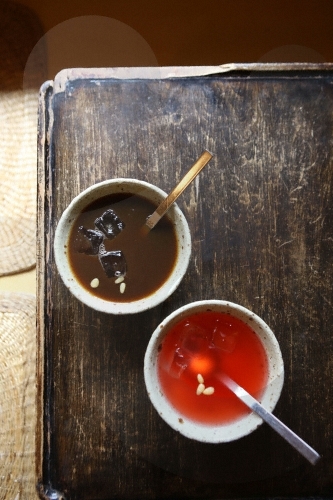
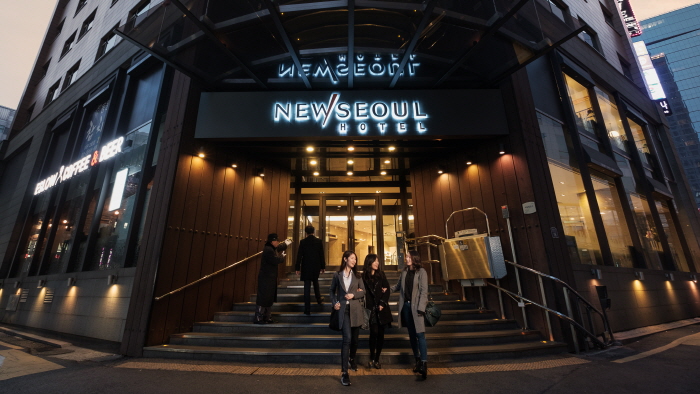

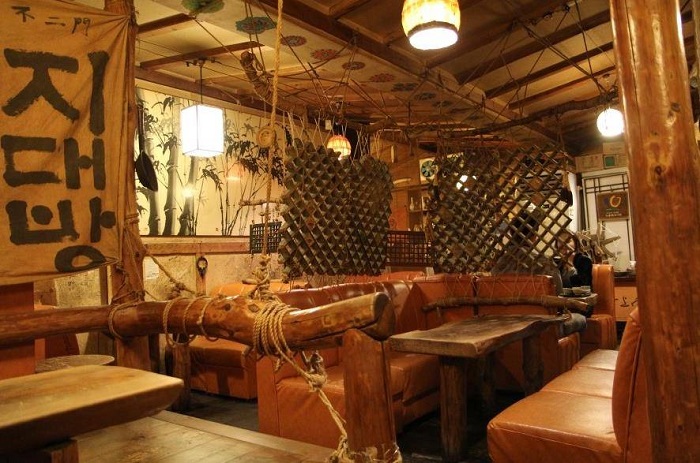
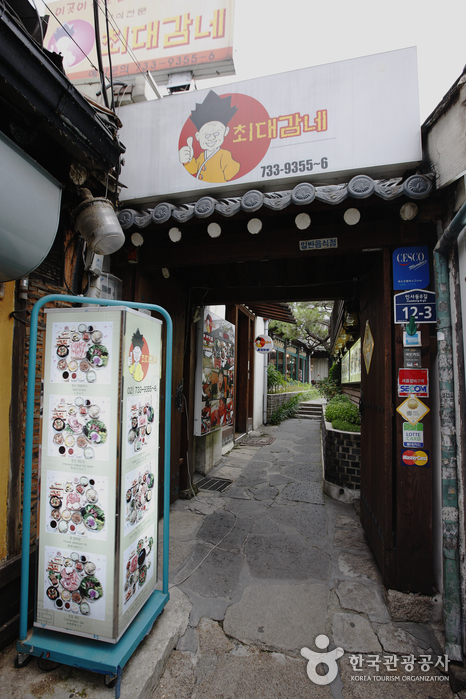
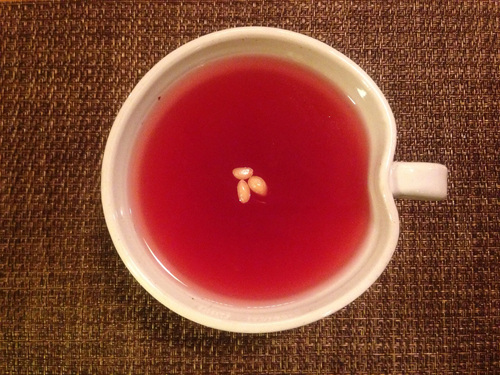
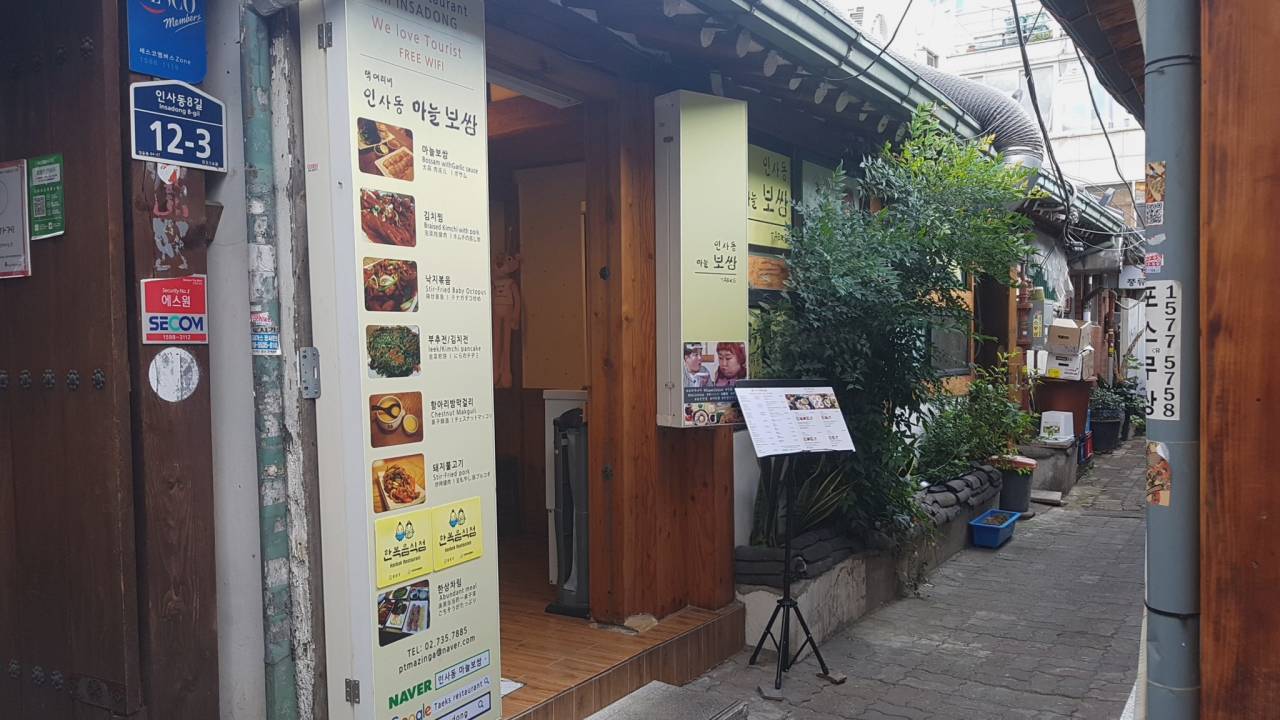
 Español
Español
 한국어
한국어 English
English 日本語
日本語 中文(简体)
中文(简体) Deutsch
Deutsch Français
Français Русский
Русский